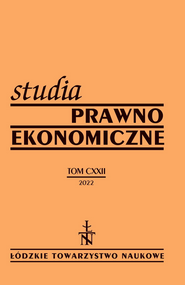The financial strategy of acquirers and M&A success in the automotive sector
The financial strategy of acquirers and M&A success in the automotive sector
Author(s): Adam Kucharski, Jakub MarszałekSubject(s): Economy, National Economy, Business Economy / Management
Published by: Łódzkie Towarzystwo Naukowe
Keywords: mergers and acquisitions; financial management; enterprise growth
Summary/Abstract: Background: The article investigates factors that contribute to the success of mergers and acquisitions (M&A). The problem of capital consolidation profitability is still not solved, and the research results so far are inconclusive or even contradictory. The article proposes an analysis of the financial situation of enterprises carrying out mergers or acquisitions before the transaction to define the conditions of their potential success.Research purpose: The main objective of the article is to assess the relationship between the financial situation of an enterprise implementing an external growth strategy through capital consolidation and a successful merger or acquisition. We hypothesize that one of the factors responsible for a successful merger of enterprises is the entity’s possession of specific resources and the possibility of using them. It was proposed that the measuring potential of the acquiring company should be measured by its balance sheet structure, financial liquidity and profitability, which form the framework of the financial strategy.Methods: The article compares the values of selected financial ratios of companies that carry out mergers or acquisitions in the automotive sector. Pre-transaction values were analyzed and related to the excess rate of return on the shares of the acquiring company after consolidation, which was used to assess the success or failure of the consolidation effect. The study used descriptive statistics, mainly the median and the Mann-Whitney test.1Conclusions: The comparative analysis shows that consolidating companies were more likely to be unsuccessful if they followed a stable, balanced, and prudent financing policy. Companies with higher financial liquidity, better return on capital or operating activities, and more indebtedness achieved higher above-average rates of return after consolidation. The research results may indicate insufficient due diligence by companies in better financial standing. Those with more limited resources and financial possibilities choose expansion goals with greater care, which may result in better results after the consolidation.
Journal: Studia Prawno-Ekonomiczne
- Issue Year: 2022
- Issue No: 125
- Page Range: 103-119
- Page Count: 17
- Language: English

